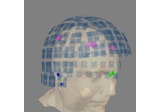mne.gui.coregistration¶
- mne.gui.coregistration(tabbed=False, split=True, width=None, inst=None, subject=None, subjects_dir=None, guess_mri_subject=None, height=None, head_opacity=None, head_high_res=None, trans=None, scrollable=True, project_eeg=None, orient_to_surface=None, scale_by_distance=None, mark_inside=None, interaction=None, scale=None, advanced_rendering=None, head_inside=True, verbose=None)[source]¶
Coregister an MRI with a subject’s head shape.
The recommended way to use the GUI is through bash with:
$ mne coreg
- Parameters
- tabbedbool
Combine the data source panel and the coregistration panel into a single panel with tabs.
- splitbool
Split the main panels with a movable splitter (good for QT4 but unnecessary for wx backend).
- width
int|None Specify the width for window (in logical pixels). Default is None, which uses
MNE_COREG_WINDOW_WIDTHconfig value (which defaults to 800).- inst
None|str Path to an instance file containing the digitizer data. Compatible for Raw, Epochs, and Evoked files.
- subject
None|str Name of the mri subject.
- subjects_dir
str|None The path to the FreeSurfer subjects reconstructions. It corresponds to FreeSurfer environment variable
SUBJECTS_DIR.- guess_mri_subjectbool
When selecting a new head shape file, guess the subject’s name based on the filename and change the MRI subject accordingly (default True).
- height
int|None Specify a height for window (in logical pixels). Default is None, which uses
MNE_COREG_WINDOW_WIDTHconfig value (which defaults to 400).- head_opacity
float|None The opacity of the head surface in the range [0., 1.]. Default is None, which uses
MNE_COREG_HEAD_OPACITYconfig value (which defaults to 1.).- head_high_resbool |
None Use a high resolution head surface. Default is None, which uses
MNE_COREG_HEAD_HIGH_RESconfig value (which defaults to True).- trans
str|None The transform file to use.
- scrollablebool
Make the coregistration panel vertically scrollable (default True).
- project_eegbool |
None If True (default None), project EEG electrodes to the head surface. This is only for visualization purposes and does not affect fitting.
New in version 0.16.
- orient_to_surfacebool |
None If True (default None), orient EEG electrode and head shape points to the head surface.
New in version 0.16.
- scale_by_distancebool |
None If True (default None), scale the digitization points by their distance from the scalp surface.
New in version 0.16.
- mark_insidebool |
None If True (default None), mark points inside the head surface in a different color.
New in version 0.16.
- interaction
str|None Can be ‘terrain’ (default None), use terrain-style interaction (where “up” is the Z/superior direction), or ‘trackball’ to use orientationless interactions.
New in version 0.16.
- scale
float|None The scaling for the scene.
New in version 0.16.
- advanced_renderingbool
Use advanced OpenGL rendering techniques (default True). For some renderers (such as MESA software) this can cause rendering bugs.
New in version 0.18.
- head_insidebool
If True (default), add opaque inner scalp head surface to help occlude points behind the head.
New in version 0.23.
- verbosebool,
str,int, orNone If not None, override default verbose level (see
mne.verbose()and Logging documentation for more). If used, it should be passed as a keyword-argument only.
- Returns
- frameinstance of CoregFrame
The coregistration frame.
Notes
Many parameters (e.g.,
project_eeg) take None as a parameter, which means that the default will be read from the MNE-Python configuration file (which gets saved when exiting).Step by step instructions for the coregistrations can be accessed as slides, for subjects with structural MRI and for subjects for which no MRI is available.

